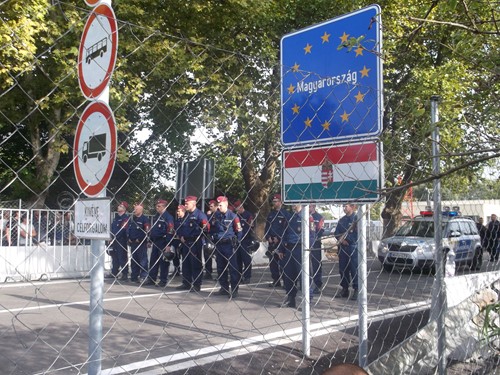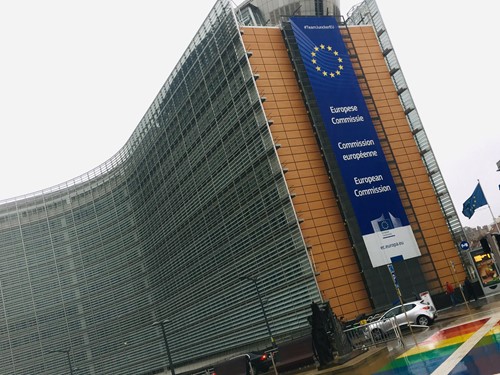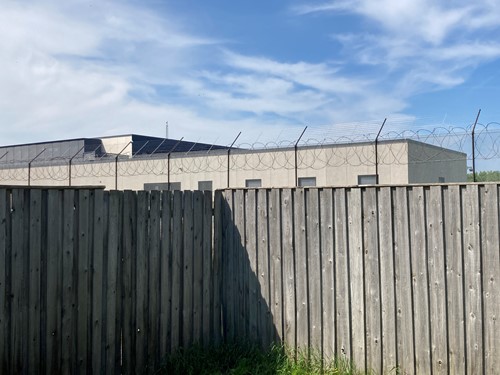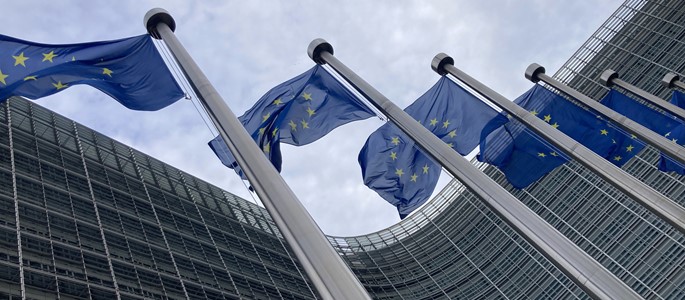The new EU pact on migration and asylum: how does it affect Denmark?
Despite the opt-outs, Denmark must adapt to the EU's new pact which contains frightening prospects for asylum seekers in every way
Since 2020, the EU has been working on a thorough reform of the asylum area. It has now been discussed, reviewed and adopted in all instances, except for the very last formalities. It is expected to be finally signed in April, and then member states have two years to implement it. According to the official EU website, the pact “is designed to manage and normalise migration for the long term, providing certainty, clarity and decent conditions for people arriving in the EU.”
We present a review which is partly based on oral and written presentations by the director of ECRE, Catherine Woollard. ECRE is an umbrella organisation for 122 European asylum ngo's. As Woollard says: "It's over and we lost". Although Denmark has not participated in the negotiations and is not subject to the pact due to the opt-outs, Denmark's asylum policy has undoubtedly been an inspiration for the countries that have pushed for a hard line in the pact, and in the eyes of the Danish government it is a great success.
The background to the covenant
In short, the new pact is an after-reaction to the so-called "refugee crisis" in 2015-16. Most EU states panicked and envisioned a horror scenario where Europe was flooded with refugees. Politicians are busy claiming that only a few are "real" refugees, but it is rather a fear of the right which "real" refugees have to settle in the territory that is causing anxiety among governments – at a time when the number of refugees worldwide is increasing rapidly. During the so-called "refugee crisis" in 2016, the recognition rate in Denmark was 86%, and today the EU average is still above 50% – and that's only for the first instance. Every third refusal in the EU ends up being overturned in the appeals bodies. A majority of asylum seekers thus have a claim to protection, and this is in fact what the EU is trying to undermine with the new pact.

The border to Hungary 2015. Photo: Brian Esbensen.
A long process
The pact has been through many negotiations and changes between the individual member states and the EU's various bodies. It started with the decision in 2016 not to renegotiate the Dublin Regulation, despite its many weaknesses. In 2018, the Council rejected a less intrusive reform package, and in 2019 Germany and France joined the Dutch idea of a tough border procedure as the best "solution" to the self-created, so-called crisis. In 2020, Parliament took the disastrous decision of an all-or-nothing package and presented the first version of the new pact, and in 2021 the Commission used the situation on the border with Belarus to add the crisis management section. In 2023, Parliament agreed after much discussion to adopt the hard line, ignoring the many warnings from NGOs and concerns from a smaller group of member states. The Swedish presidency was proud of its success, and was the one to suggest, among other things, that children should not be exempted from detention.
The implementation of the pact will be decisive, and it will take place under the presidency of Hungary, Poland and Denmark. Three countries which are not exactly known for their humanistic approach to the area of asylum. At the same time, some of the leading figures in the EU are facing a replacement, which may have an impact on the direction the pact's practical design takes. In the end, many issues will also be up to the courts to decide based on individual cases.
Content of the pact
The main part is called "Regulation on asylum and migration management" (abbreviated RAMM), and in addition there is "Regulation addressing situations of crisis and force majeure in the field of migration and asylum” (the crisis tool). The latter allows Member States to waive responsibilities and obligations under the former in special situations.
RAMM contains the following new measures:
• Shorter and less thorough asylum case processing, including a screening before entering the EU, which will often take place in closed detention centres at the external borders. Children can also be placed in closed detention. Applicants from countries where the chance of getting asylum is less than 20% according to the EU Asylum Office, as well as people who are believed to pose a threat or have withheld information, will be rejected at the border in an fast-track procedure without appeal.
• A minimum of 30,000 people must be in the border procedure at any given time, distributed according to a complicated key between Member States at the external borders. This may lead to increased use of push-backs to avoid establishing large detention centres which are not popular at national level.
• Erosion of the right to an appeal. Deadlines will be very short for appealing asylum refusals and deportation decisions, and up to three different types of decisions can be made at the same time – all with short deadlines. Many decisions will be made in detention, which means a severe limitation in access to legal aid, social support and the use of freedom of expression.
• Punish "secondary movements", i.e. that if you travel on from an EU country where you are registered, you lose the right to accommodation in other EU countries. Furthermore, a country that does not accept to take the person back will lose the right to participate in the solidarity mechanism.
• More transfers to "safe third countries", as more countries will be considered safe, inspired by the EU-Turkey deal. The attachment to that country, which is a prerequisite, can be based on vague family ties or even on transit alone. Furthermore, an extended use of the term "internal flight alternative", which already exists in EU legislation but not in international asylum law, i.e. reference to living in a supposedly safe area of an otherwise unsafe homeland.
• Solidarity provisions: all Member States undertake some form of distribution according to very complicated rules. It can either be in the form of transferring a number of asylum seekers from a country with many applicants to a country with fewer, or it can be support for countries with many arrivals in the form of caseworkers or money. A state can "sell" its responsibility for an asylum seeker for €20,000 to another member state.
Crisis tool:
If a crisis, a state of force majeure, or only the build-up to a crisis periodically occurs (these terms are not precisely defined and the assessment will be up to each individual state), the states can introduce special emergency procedures: up to 4 weeks delay of registration, and up to 9 months in detention at a border. Furthermore, the possibility of a further rough sorting of asylum seekers at the border based on whether you come from a country where the chance of getting asylum is less than 75% according to the EU average. Extended use of detention can also be used on the basis of an automatic presumption that the applicant will abscond (the equivalent already exists in the Danish Immigration Act, and is the most common reason for placing an asylum seeker in Ellebæk).

The European Commission in Brussels. Photo by the author.
Criticism of the pact
ECRE's director predicts that, overall, the pact will mean increased use of detention, more people in need, and more deportations – including to unsafe countries with great risk for the individual. Furthermore, more people will find themselves in the limbo situation that occurs in the majority of Dublin cases because the transfer is not carried out – similar situations must be expected to arise with the new transfers under the solidarity mechanism, and a higher number of rejections will only increase the problems of gaining acceptance from the home countries to deport.
Both ECRE, PICUM, Amnesty and other NGOs in the field of human rights have sharply warned against large parts of the pact, and they see it overall as a significant deterioration of the right to asylum in the EU. ENAR also accuses the pact of neo-colonialism and the racialization of migration policy. PICUM, of which Refugees Welcome is a member, sent an open letter to the Commission in December 2023 signed by 50 NGOs about the major risks to human rights in the Covenant.
“This agreement will set back European asylum law for decades to come. Its likely outcome is a surge in suffering on every step of a person’s journey to seek asylum in the EU. From the way they are treated by countries outside the EU, their access to asylum and legal support at Europe’s border, to their reception within the EU, this agreement is designed to make it harder for people to access safety,” said Eve Geddie, Director of Amnesty International’s European Institutions Office.
UNHCR has been more positive, and has also expressed hope that the pact can lead to a better distribution. But if you delve into the recommendations that UNHCR has just sent to the Belgian-Hungarian Presidency, there are plenty of warnings against push-backs, criminalization of rescue work, restrictions on the right to apply for asylum, special considerations for vulnerable people, access to legal aid and NGO support, the use of detention, the definition of a crisis situation and the assessment of safe third countries, just to mention some of the points.

Ellebæk, closed detention centre in Denmark. Photo by the author.
What does this mean for Denmark's asylum policy?
Since Denmark is outside the EU's common asylum policy due to the reservations, Denmark has not taken part in the negotiations and is not subject to the pact. However, since we have joined the Dublin regulation via a parallel agreement, the government will apply to join the changes that the pact entails in this area. Transfers both ways will therefore still take place, but with slightly different criteria and deadlines. The increased control at the external borders will make it even more difficult to get to Denmark.
Since we do not have an external border with the EU, it will probably not be necessary to set up closed detention centres on Denmark's borders, but the pact sadly builds on putting asylum seekers in prison, even children, and may eventually lead to increased use of Ellebæk. On the other hand, it is very unlikely that Denmark will join the solidarity mechanism, since the number of arrivals is extremely low, and therefore there will be no benefit from it. Denmark already has a screening mechanism without access to appeal in the form of the Manifestly Unfounded procedure, but it can be expanded to include more. The Refugee Appeals Board may also assess more countries as "safe" and use Internal Flight Alternative more often, inspired by the EU.
Overall, there is probably no doubt that Denmark will use the very worst elements of the pact as inspiration and ensure that access to asylum will never be easier than in the rest of the EU. So, when the EU tightens the rope, Denmark will only tighten further.
Did this article provide you with important information?
Support or become a member,
so that we can continue our work!


